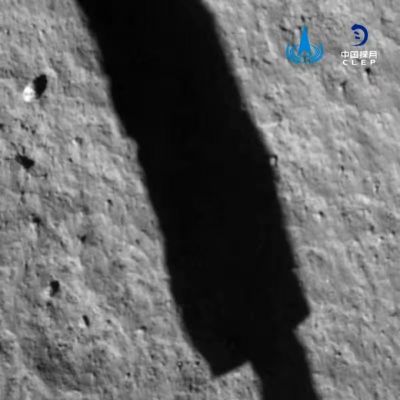While the world is now struggling to cope with the Coronavirus pandemic, China, where the virus first emerged last year December, is zooming into the space with successful exploration programs. On Tuesday, December 1, China collected Moon rocks in a groundbreaking space mission, but on the same day, top rival US experienced something extremely different in terms of space exploration and observation.
Its Puerto Rico-based a colossal telescope, the Arecibo Observatory, collapsed after deteriorating since August this year. The telescope had been operating for 57 years as a center for astronomical observation. On the other hand, Chinese spacecraft, unmanned Chang'e-5 probe, landed on the lunar surface to bring Moon rocks back to Earth for the first time in 50 years.



The venture has targeted Mons Rümker, which is an isolated volcanic formation that is located in the northwest part of the Moon's near side. The aim is to pack almost two kilograms of regolith and send up to an orbiting vehicle that will transport the samples to Earth.
The moon landing by China and retrieval of lunar materials mark the first time a country has acquired samples from Earth's only natural satellite since the Soviet Union's Luna 24 mission which took place in 1976. Earlier, NASA astronauts under the Apollo program reportedly retrieved more than 800 pounds of samples from Moon between 1969 and 1972.
The Space Race
But the two events—China's lunar landing and the US' telescope collapse—on the same day show the massive contrast between the Asian country's recent investment in the space program, and the US's space efforts, mostly dependent on the budget and priorities.
China's moon program started almost a decade ago, with an investment of $180 million, with orbiter launches in 2007 and 2008. According to Fortune, while the US spends the most on space exploration compared to other countries, China has increased space spending 349 percent over 15 years.
Chang'e-5 spacecraft will eventually dock with the rest of the spacecraft in orbit and from there the collected lunar materials will head back to Earth. The samples are expected to land in mid-December in the Inner Mongolian region.
CCTV-13 just ran this. #China #Moon #Change5 pic.twitter.com/gxXBNr7mz6
— Jonathan Amos (@BBCAmos) December 1, 2020
#ChangE5 made a successful "brake" after 112 hours' travel in the space and entered the lunar orbit. It is a vital step for landing on the moon.
— Hua Chunying åŽæ˜¥èŽ¹ (@SpokespersonCHN) November 29, 2020
🔗https://t.co/QjhQeGJCs4 pic.twitter.com/b7je4O9Cj6
The Puerto Rico Observatory
The US Arecibo observatory's suspended telescope fell about 450 feet and crashed into the reflector dish of the observatory on Tuesday morning. It was built in the 1960s and the observatory was initially funded by the US Department of Defense.
In recent times, it is overseen by the US National Science Foundation and the University of Central Florida. Until the collapse, the telescope has made several important scientific discoveries—includes tracking near-Earth asteroids and in 1993 Russell Hulse and Joseph Taylor received Nobel Prize in Physics for their work with Arecibo in monitoring a binary pulsar.
Ada Monzón, who is a Puerto Rican meteorologist cried on air while announcing the fall of the telescope on Tuesday, November 1. "The Arecibo Observatory collapsed; collapsed, gentlemen. We have made an attempt to save him, to the extent possible and we knew this was a possibility," he said.
Dennis Vazquez via Facebook: He took these pictures of the collapse of the Arecibo Observatory. You can see the debris and the remains of the platform and the Gregorian Dome. pic.twitter.com/xneOGSVFYi
— Wilbert Andrés Ruperto (@ruperto1023) December 1, 2020
Additional details regarding the collapse at the Arecibo Observatory’s 305-meter telescope are available now at NSF's site: https://t.co/dCYLolC22L
— National Science Foundation (@NSF) December 1, 2020
Engineers are on-site. Top priorities are maintaining safety at the site and assessing damage. pic.twitter.com/9mqnBx3dcU









